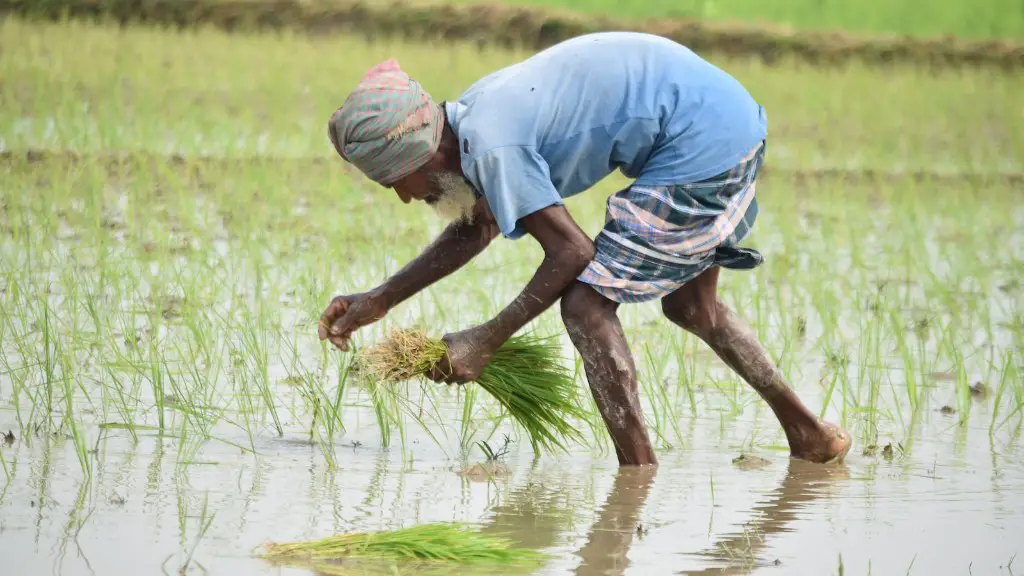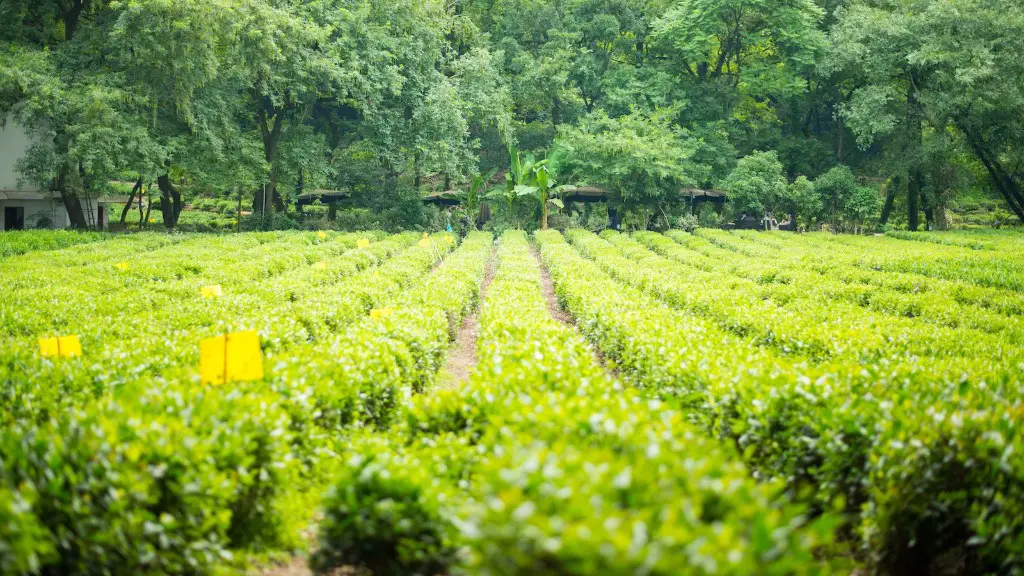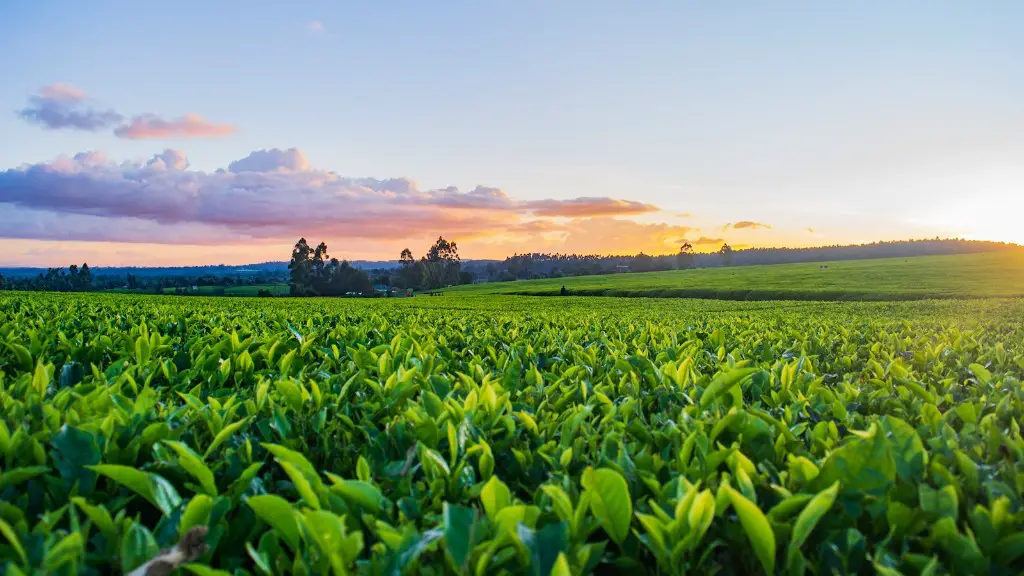Genetics in agriculture is the study of genes in plants and animals that are used in food production. Agricultural scientists use genetic information to improve the quality and quantity of food production. Through selective breeding and genetic engineering, they develop new varieties of crops and livestock that are resistant to pests and diseases, and have improved nutritional value.
Genetics are used in agriculture to improve the quality and yield of crops. Through the process of selective breeding, farmers can choose to grow crops that are more resistant to disease, pests, and harsh conditions. By understanding the genetic makeup of plants, farmers can also develop new strains of crops that are more nutritious and have higher yields.
What are the roles of genetics in agriculture?
Genetic resources are the foundation for plant breeding and improving agricultural productivity. By providing a diversity of genes, they enable us to select and breed plants with desired characteristics. This in turn increases the food supply, which is essential for human survival.
Agricultural genetics is the study of how traits are inherited in crops or livestock. An example of a plant trait is the number of days it takes for an ear of corn to reach maturity, or harvest. An example of a livestock trait is how tall a cow is expected to grow in its first year of life.
What are the advantages of genetics in agriculture
Genetic engineering is a powerful tool that can be used to improve crops and animals. When used in agriculture, it can help to increase crop yields, reduce costs for food or drug production, reduce the need for pesticides, and improve the nutrient composition and food quality. Additionally, it can help to create resistance to pests and disease, and increase food security. Finally, it can have medical benefits for the world’s growing population.
The study of plant genetics is important for agricultural purposes. By understanding the genetics of plants, we can modify them to increase yields, confer pest and disease resistance, provide resistance to herbicides, or to increase their nutritional value. This has major economic impacts, as many staple crops are genetically modified.
What is the importance of genetics in plants?
Genetic diversity is the base for survival of plants in nature and for crop improvement. Diversity in plant genetic resources provides opportunity for plant breeders to develop new and improved cultivars with desirable characteristics, which include both farmer-preferred traits (high yield potential, large seed, etc.) and traits that confer resistance to biotic and abiotic stresses (disease, pests, drought, heat, etc.).
Agricultural genomics is the study of the genes of plants in order to develop new, specific varieties of crops. This new technology can help address various food problems around the world and improve the productivity and sustainability of many plant varieties and livestock productions.
How is genetics applied in plant breeding?
Plant breeding is the application of genetic principles to produce plants that are more useful to humans. This is accomplished by selecting plants found to be economically or aesthetically desirable, first by controlling the mating of selected individuals, and then by selecting certain individuals among the progeny.
Plant breeding has been practiced for millennia, and has resulted in the development of many different varieties of plants suited to different climates, soils, and uses. Modern plant breeding makes use of many different scientific disciplines, including genetics, biochemistry, and statistics.
Plant breeding can be used to improve both the yield and the quality of plants. For example, plant breeders have developed varieties of plants that are resistant to disease, pests, and drought. They have also developed plants with higher yields, and plants that are more nutritious and tasty.
Plant breeding is an important tool for ensuring food security in a world with a growing population. By developing new varieties of plants, plant breeders can help farmers to produce more food with less effort.
Plants have evolved over time to use DNA as their genetic material. This is because DNA is a molecule that is very stable and can store a lot of information. Plants have a lot of DNA in their cells, and this DNA is used to control the functions of the cell. Plants use DNA in their nucleus, mitochondria, and chloroplasts. These organelles are all descendants of bacteria that were captured by a eukaryotic cell and have become endosymbionts.
What are 5 applications of genetics
Genetic engineering is a powerful tool that can be used to mass-produce important medicines. Insulin, human growth hormones, follistim, human albumin, monoclonal antibodies, antihemophilic factors, and vaccines are just a few of the drugs that have been mass-produced using this technique. This method is revolutionizing the way we are able to treat various medical conditions and is helping to save countless lives.
The genotype of a plant affects its growth. For example, selected varieties of rice grow rapidly, maturing within 110 days, whereas others, in the same environmental conditions, grow more slowly and mature within 155 days. A producer has control over the genetic factor by his choice of variety.
How are crops genetically modified?
GM plants are generated by introducing a new gene into the plant’s DNA. The new gene may come from another plant, an animal, or a bacterium. Thegm plants are then grown in greenhouses or fields.
The first GM plant was created in 1983, when scientists inserted a gene from a bacterium called Agrobacterium tumefaciens into a petunia plant. This gene made the plant produce a protein that gave the petunia a smoother, shinier surface.
Today, there are many GM plants on the market, including crops like corn, soybeans, and cotton. GM crops have been engineered to be resistant to herbicides, pests, and diseases. They have also been engineered to produce higher yields and to be more nutritious.
There are some concerns about GM plants. Some people worry that they may be unsafe to eat. Others worry that they may harm the environment.
The safety of GM plants is regulated by the US Food and Drug Administration (FDA). The FDA requires that all GM plants be tested before they are commercialized.
GM plants are a controversial topic. Some people believe that they offer many benefits, while others are concerned about their safety.
Genetics may be studied in several ways, including transmission genetics, molecular genetics and population genetics. Each area of study provides different insights into how genetics affects living organisms.
What is a real life application of genetics
The human body is an amazing machine, and scientists are continuously discovering new ways that our bodies work. In recent years, research has advanced further and identified genes that code for the way muscles in our body respond to diet and training, skin types and their response to nutrition, the control of hair fall, risk of diabetic complications, obesity, addictions and more. This knowledge is vital in developing targeted treatments and interventions for many conditions and diseases.
Environmental genetic assessments can be used to study a wide range of organisms, from bacteria to plants. They can be used to study the effects of environmental stressors on genes, to determine the genetic risk of exposure to harmful substances, or to monitor populations for signs of genetic change.
What are 3 of the most common genetically modified crops?
GMO crops are crops that have been genetically modified to have certain desired traits. For example, a GMO crop might be modified to be resistant to herbicides or pests.
Only a few types of GMO crops are grown in the United States, but some of these GMOs make up a large percentage of the crop grown. For example, GMO soybeans, corn, sugar beets, canola, and cotton make up a large percentage of the corresponding crops grown in the United States.
The vast majority of soy grown in the United States is genetically modified. Soy is used in many processed foods, so it’s important to be aware of the potential risks of consuming it. Some studies have linked genetically modified soy to health problems in animals, so there is reason to believe that it could have similar effects in humans. If you’re concerned about the health risks of GM soy, avoid foods that contain it or choose products that are certified organic or verified non-GMO.
What are 3 benefits of genetically modified crops
There are many benefits to growing and eating more nutritious food. nutritious food is not only more delicious, but it is also better for your overall health. Additionally, growing disease- and drought-resistant plants requires fewer environmental resources, which is beneficial for the planet. Finally, using less pesticides is better for both your health and the environment.
Genetics research studies how individual genes or groups of genes are involved in health and disease. Understanding genetic factors and genetic disorders is important in learning more about promoting health and preventing disease.
Warp Up
Genetics are used in agriculture to select for desired traits in crops and livestock. This can be done through traditional breeding methods, or through more modern techniques like genetic engineering. By understanding the genetic make-up of plants and animals, farmers can more efficiently produce crops and livestock that are hardier, more productive, and more resistant to disease.
Genetics are used in agriculture to help farmers select for desired traits in crops and animals. This can be done through traditional breeding methods or by using genetic engineering. By understanding and manipulating the genes of crops and animals, farmers can produce higher yields, create resistance to pests and diseases, and improve the quality of their products. Ultimately, the use of genetics in agriculture can help to improve the food supply for the growing population.





